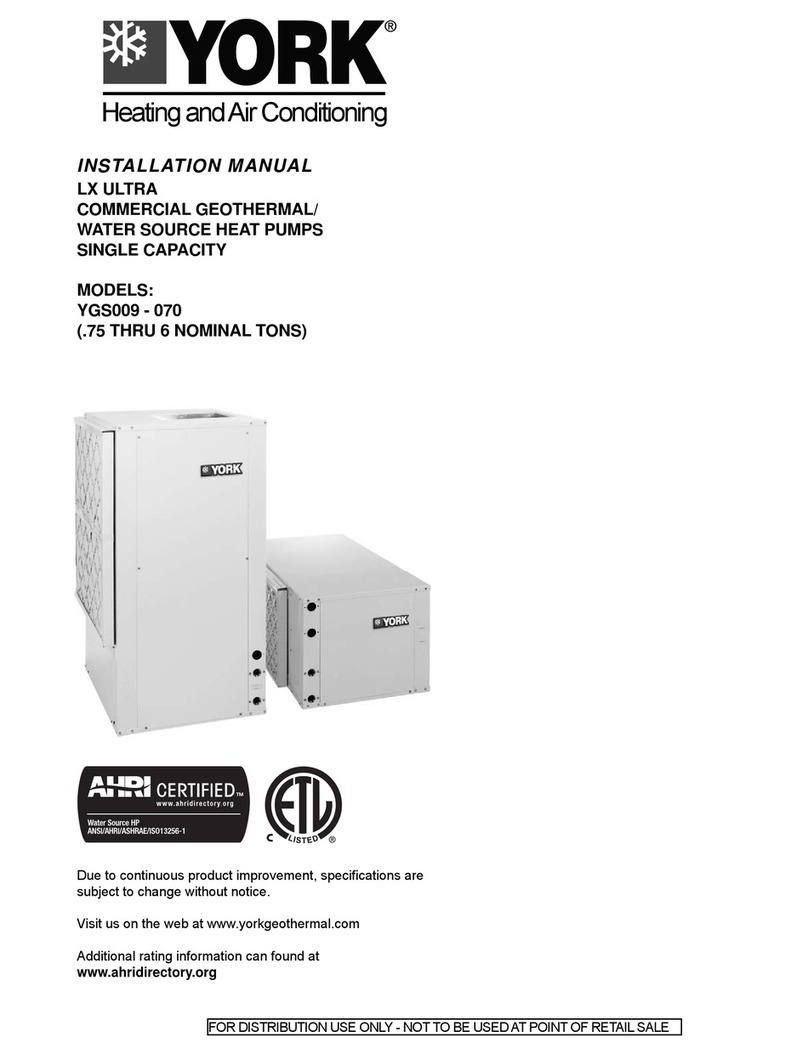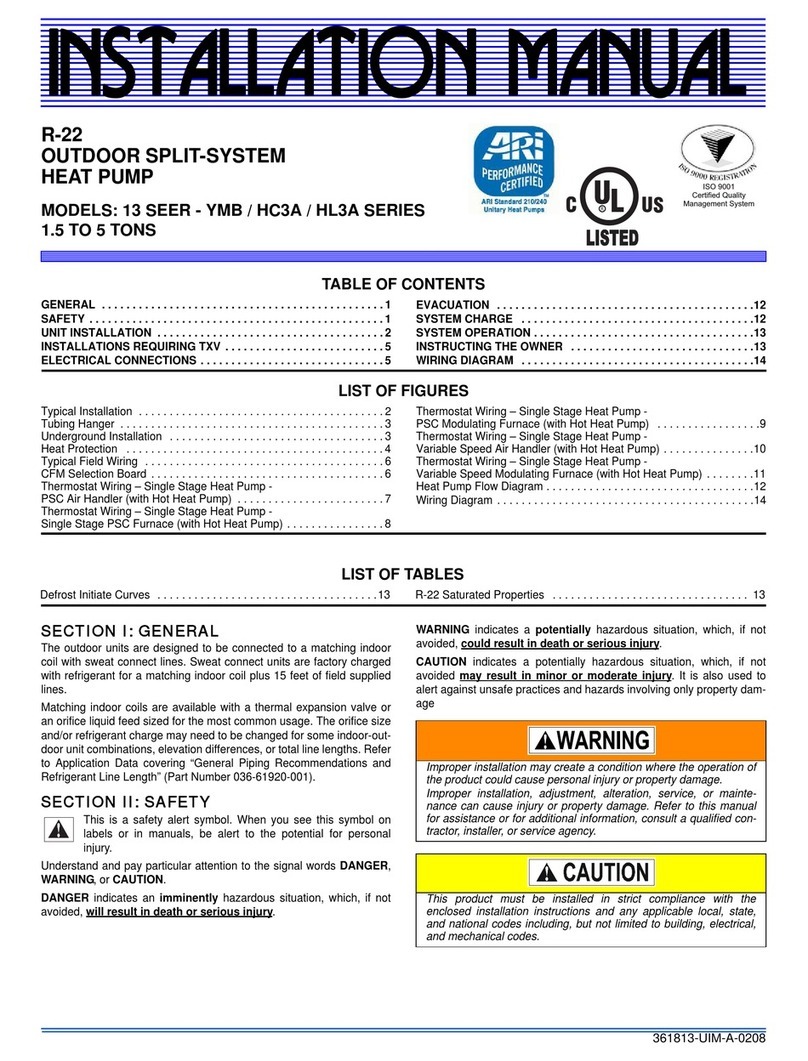York B1HA018A06 User manual
Other York Heat Pump manuals

York
York SINGLE PACKAGE DUAL FUEL HEAT PUMP User manual

York
York ZJ Series Quick start guide
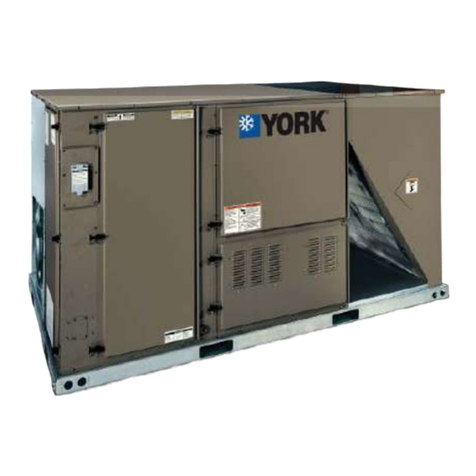
York
York Predator XP Series User manual

York
York STELLAR PLUS E*FH018 Quick start guide
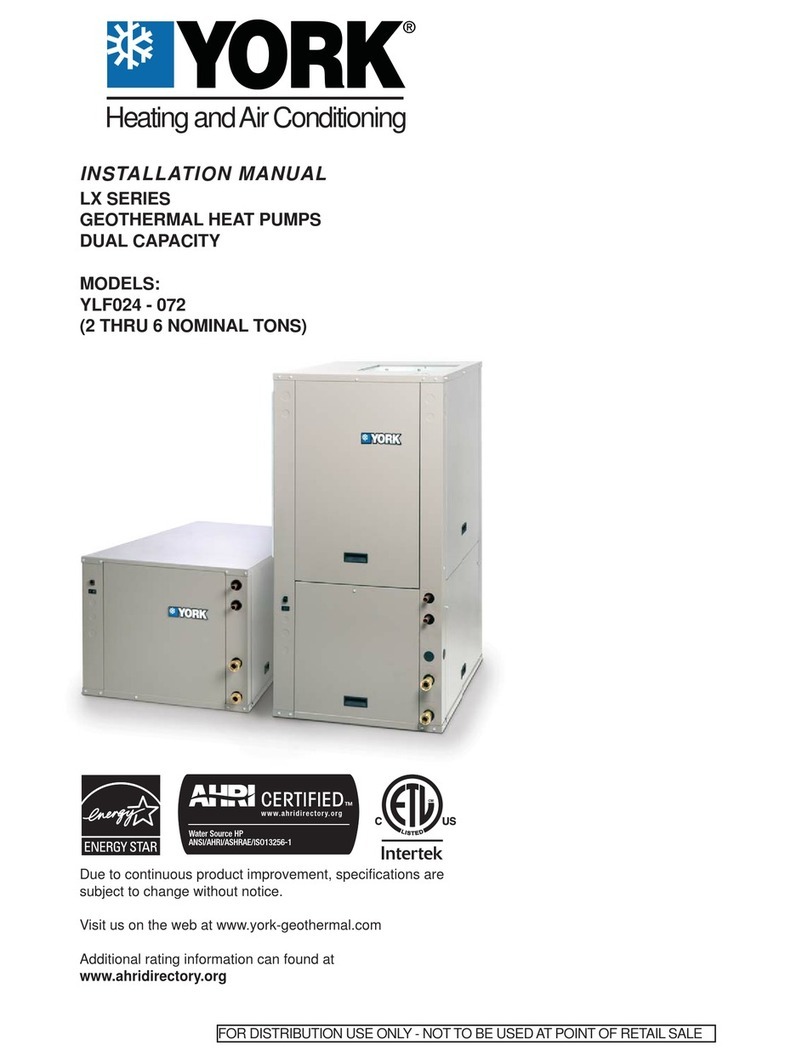
York
York LX series User manual
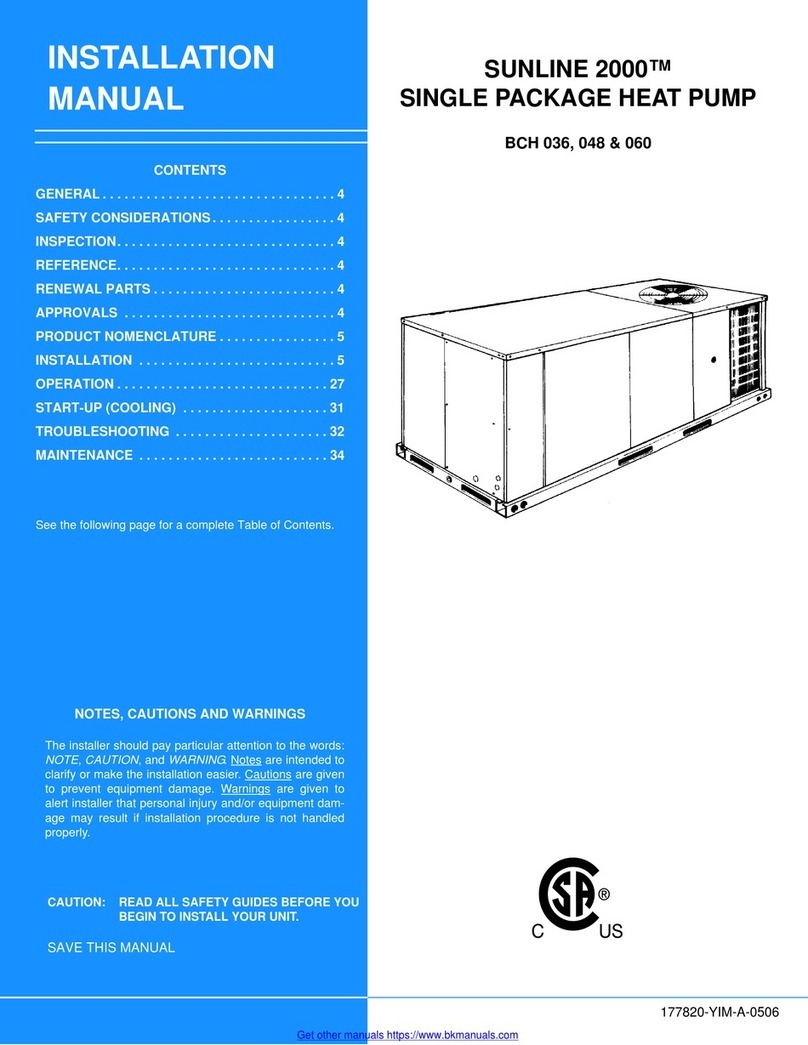
York
York Sunline 2000 BCH 036 User manual

York
York YCUL0016 User manual
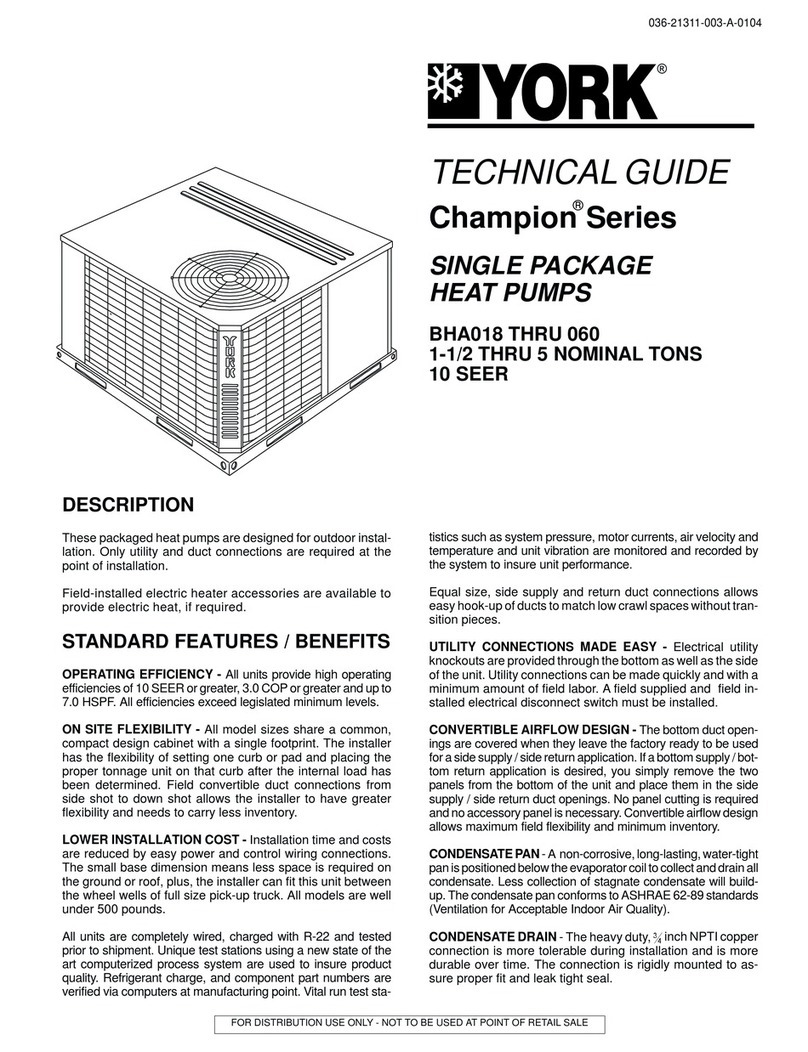
York
York Champion Series Quick start guide
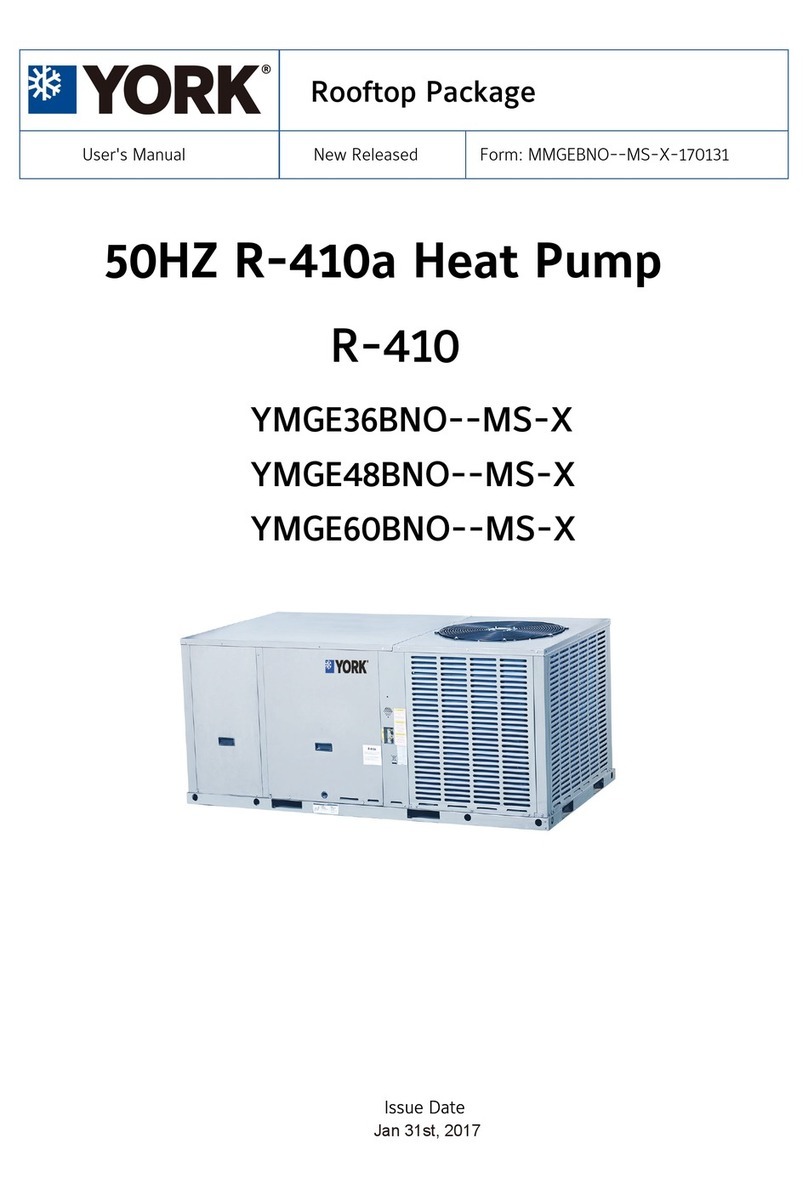
York
York YMGE36BNO-MS-X User manual
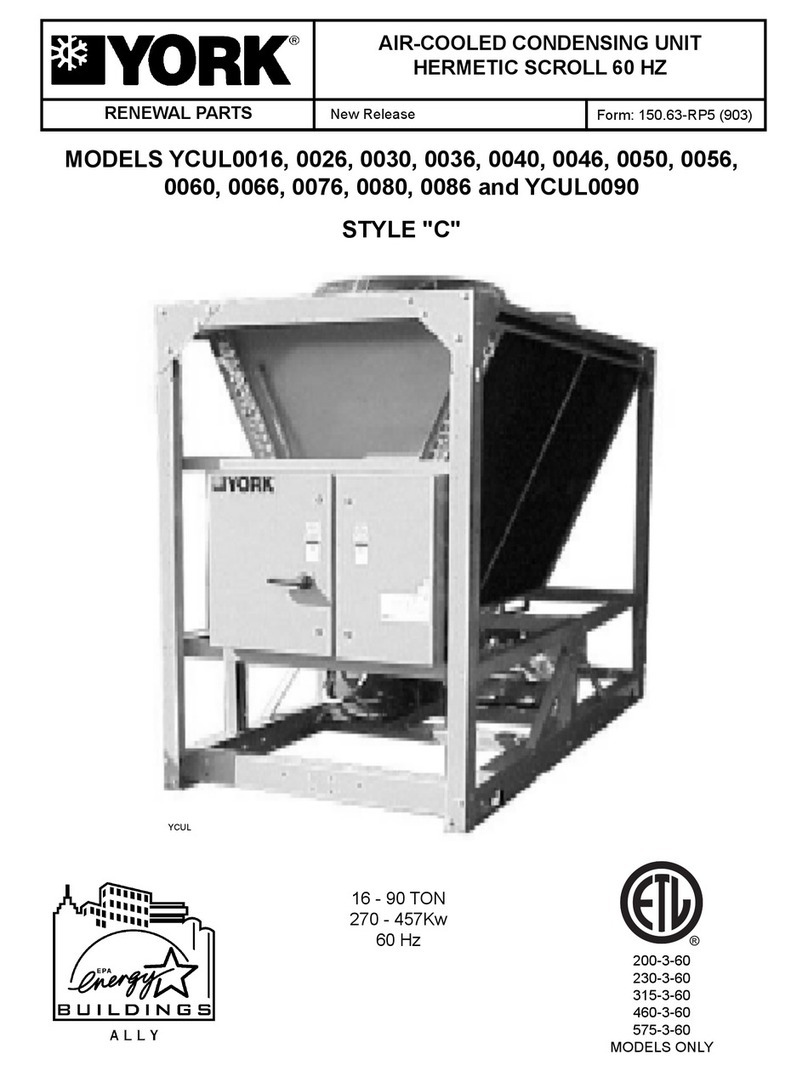
York
York YCUL0026 User manual

York
York Sunline 2000 BQ 036 Quick start guide

York
York H1RA018S78 Quick start guide
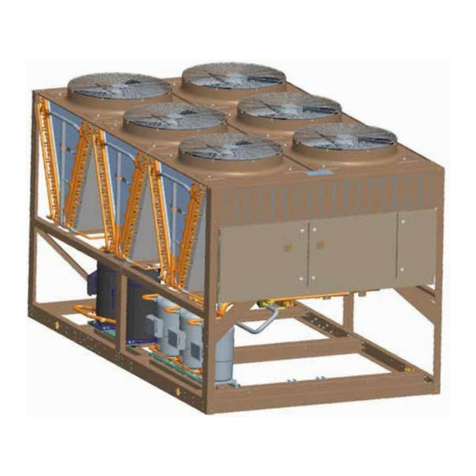
York
York YLUA0248 Series Owner's manual

York
York THGD18 THRU 60 Quick start guide
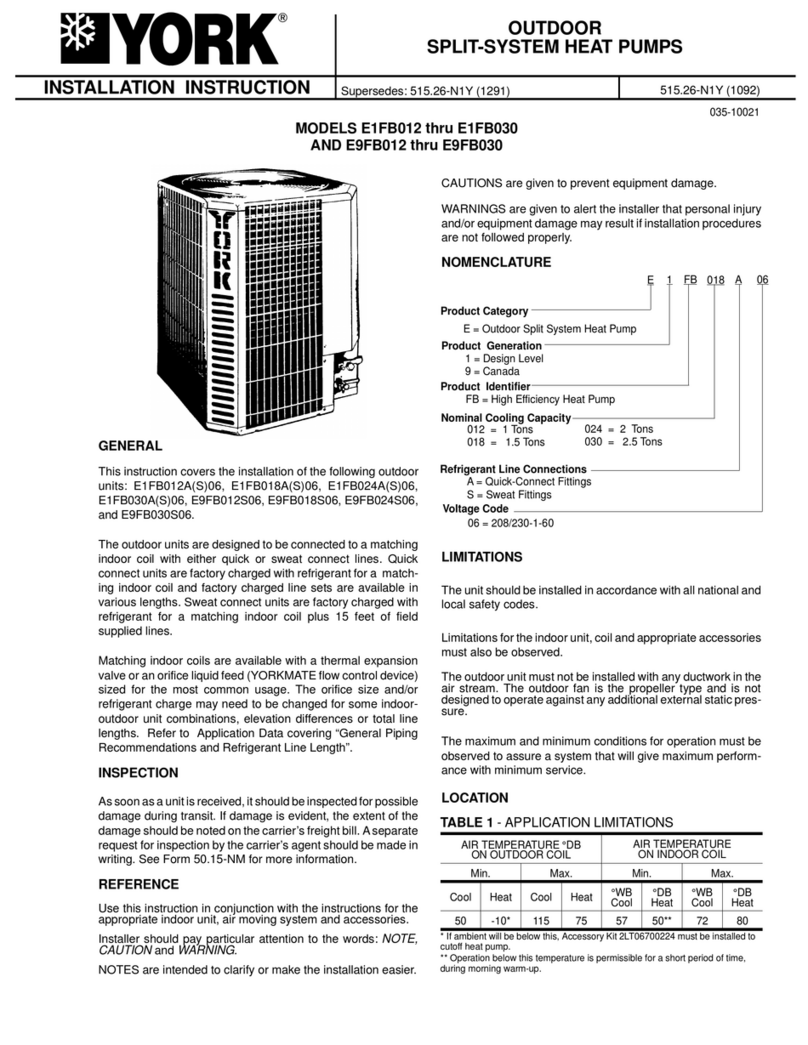
York
York E1FB012 User manual

York
York ERJC 36 User manual

York
York GHGD18 Quick start guide

York
York TCHE Series Quick start guide

York
York BQ240 Quick start guide
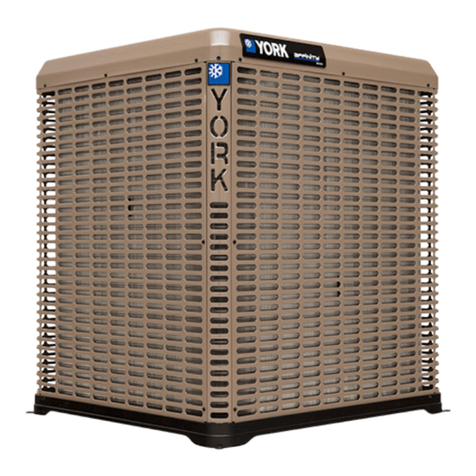
York
York E1RA Series User manual
Popular Heat Pump manuals by other brands

Daikin
Daikin RXL12QMVJU Service manual

AIREDALE
AIREDALE BluCube CUR092V16-1CO-0 Installation and maintenance manual

Calyenty
Calyenty RBH 125 Customer's manual

GRE
GRE HPGI50 owner's manual

Carrier
Carrier 30XW Installation, operation and maintenance instructions

Hayward
Hayward SUMHEAT HP5131DT3 Installation instructions manual

REMKO
REMKO SQW 400 Electrical wiring

Sanyo
Sanyo SAP120FCH Service manual

Daikin
Daikin EHYHBH05AA Operation manual

Panasonic
Panasonic WH-SDF03E3E5 Design handbook

Airxcel
Airxcel 45000 Series Installation, operation and maintenance instructions

Mitsubishi Electric
Mitsubishi Electric PUZ-SWM60VAA Service manual

Dimplex
Dimplex LI 16I-TUR Installation and operating instruction

Carrier
Carrier WSHP Open v3 Integration guide

Mitsubishi Electric
Mitsubishi Electric EHSE-YM9EC Service manual

TGM
TGM CTV14CN018A Technical manual

Carrier
Carrier 38MGQ Series installation instructions

Kokido
Kokido K2O K880BX/EU Owner's manual & installation guide

